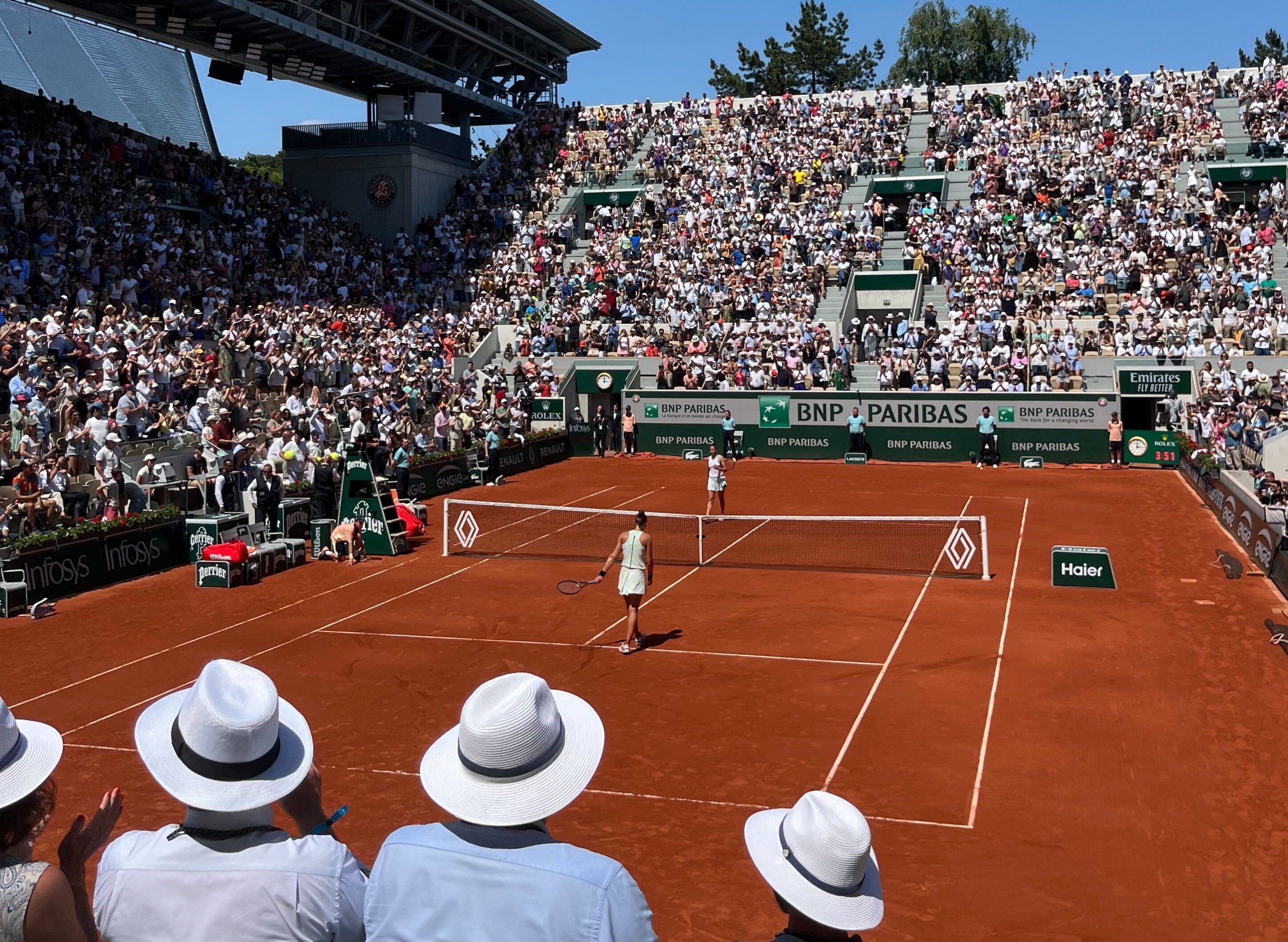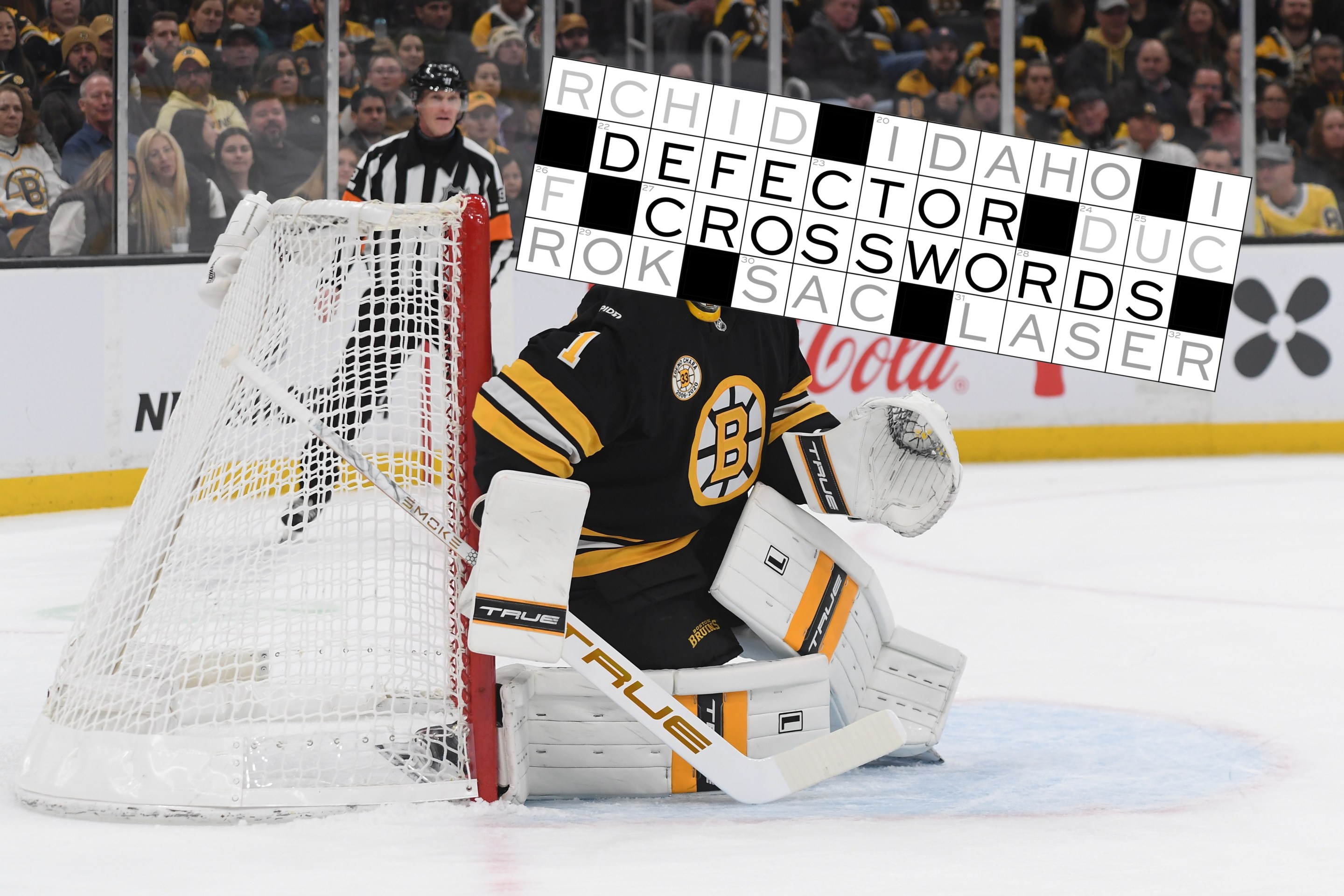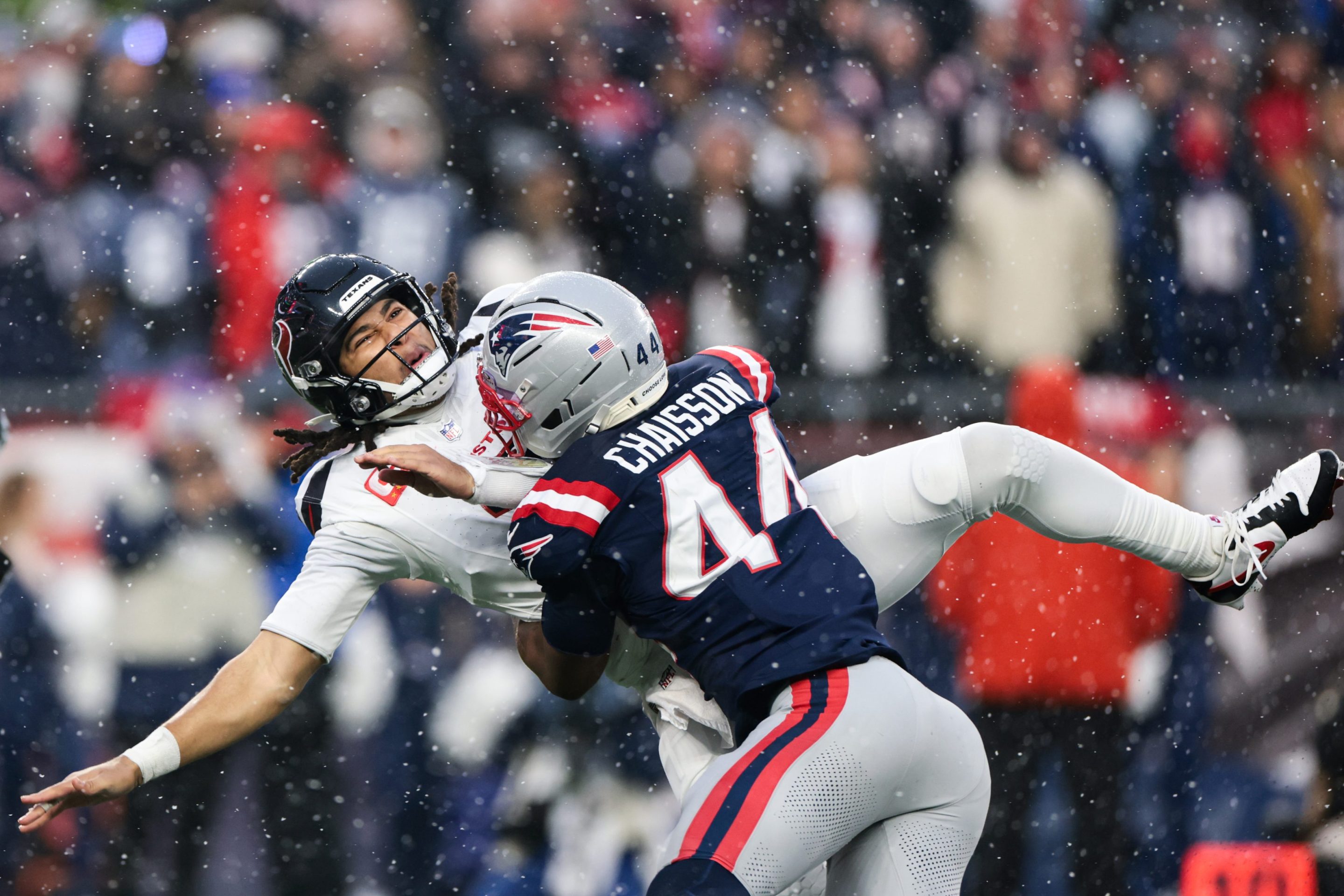PARIS — The crowd at Roland Garros is a baby. Before you douse me in a refreshing spray of Perrier, let me specify that I don’t mean this as an insult, and in any case, I adore babies. But these fans display an emotional volatility I have come to know primarily in babies.
The crowd is capable of baffling emotional 180s, oscillating from joy to hostility in a flash, for reasons mysterious to any third party. It communicates with a mix of whistles, howls, coos, grunts, claps, and shouted names. It is hyper-attuned to a moving ball, responding so minutely to the ebb and flow of these rallies that I sometimes wonder if I’m the one missing out on a subtlety. It will burst into solitary shouts of ba-ba-ba-BA-ba-ba-BA-ba-ba-ba, in an approximation of an old bullfighting tune. It will cycle through seven rounds of the Wave even when the umpire has tried to interrupt and restore dignity after the third round, no matter how many stentorian s’il vous plaîts boom on the sound system. And then it will applaud itself to celebrate all the Waves it has just done. These are knowledgeable and engaged fans; collectively they comprise one big baby, sensitive to all sensory stimuli, passing frictionlessly from one intense sentiment to another.
For example: The crowd on Philippe Chatrier, the main show court, had spent almost an entire women’s quarterfinal in worship of Elina Svitolina. There were any number of narrative reasons to root for her, beyond the fact that she's a superb player: She is married to the local showman Gael Monfils, fount of so much French love and pain; she is playing her first major tournament since giving birth to their child in October; she came into the tournament ranked No. 192 but vaulting suddenly toward her old top-10 form. Throughout the match the crowd burst with desperate pleas of Eh-lee-nah, as the second-seeded Aryna Sabalenka’s destructive offense put Svitolina’s capable defense to the ultimate test. It couldn’t hold up. On match point, Sabalenka—who now has a funny habit of condemning herself midpoint when she hits a shot uglier than the one she envisioned—hit an unsatisfying backhand and pivoted her usual grunt into an adlibbed Ohmygod, but she collected herself and delivered potential death blow after death blow, until one landed. Then she stood at the net, expecting a handshake. Svitolina, who is from Ukraine, stuck to her stated policy of refusing handshakes with Russian and Belarusian players in wartime; she beelined to the umpire. The adoring crowd flipped its mood, and Svitolina was submerged in boos. Maybe not every member of this worldly audience was attuned to the diplomatic wrinkles of this match. (I myself was mystified by local headlines referencing “Poutine” until I realized it referred to the Russian despot, not cheese curds.) In Svitolina’s previous match, the crowd had booed her opponent, the Russian player Daria Kasatkina—who is in fact a vocal critic of the war, and had intentionally offered Svitolina a knowing thumbs-up so as to honor her no-handshake rule. So which is it? Do they boo the Ukrainian for purposefully not shaking hands with the Belarusian, or do they boo the anti-war Russian for purposefully not shaking hands with the Ukrainian? How is it both? Like a baby, the crowd cannot quite get its geopolitical commitments straight.
And its scorn is fickle. Sometimes the booing will abruptly attach itself to a player, who then has to deal with it for the next few hours. Holger Rune, the insurgent 20-year-old and No. 6 seed, learned this firsthand during his fourth-round match against Francisco Cerundolo and his forehand. It was a five-setter, though for long stretches, a flat and bloodless one, the kind that I (very hypothetically) might fall asleep during if low on sleep and water. But there was a nasty moment in the match that lit up the crowd on Court Suzanne Lenglen. Cerundolo hit what looked like a winner; Rune hit the ball back after a second bounce; the umpire heard Cerundolo say something and dinged him for a hindrance, for talking during the point, even though the point was in fact over, because Rune hadn’t hit the ball back legally at all. It was an abysmal call.
The booing was first aimed at the velvet-voiced umpire Kader Nouni for his misjudgment, and then, after the replay showed a double bounce, was redirected to Holger Rune for his apparent lack of sportsmanship. (In a postmatch interview, a still-steamed Cerundolo would criticize Nouni, say that Rune should’ve surrendered the point as if he had indeed known that the ball bounced twice, and call on tennis to institute replays in these cases.) That was it. For the next few sets, up until the point of victory, everything Rune did received at least some boos. I sensed that if he stopped to tie his shoes, that would be grounds for abuse, too. At least Rune is deeply familiar with melodramatic mess on court. By the end of the deciding tiebreak, which had drawn timely heroics out of Rune—a volley seemingly struck with the handle of his racquet, for one—the crowd-baby had been mostly pacified, shifting back to a roughly 4-to-1 cheer-jeer ratio. There are no enduring lessons for Rune; they're back to cheering him in his next match.
Within minutes of arrival at Stade Roland Garros, I am in love with the grounds, which, amid the typical sponsored sludge, contain orange trees and a botanical garden. Six hours into the tennis, I am transfixed by the tournament and its palpable history. After barely three days, I am ready to renounce everything I know to move to Paris with a bindle and my atrophied high-school French. I can only compare notes with my time spent at the U.S. Open, the other major I’ve attended, which has been just a bus or subway ride away for most of my life. The challenge, then, is to disentangle my tennis experience from the overarching thrill of being so far from home. Am I enchanted by these things because they are newly enchanting, or am I just experiencing the same old things with a lot of French butter in my bloodstream?
Some improvements were indisputable. It’s one thing to lurch along the 7 train towards Flushing and then shamble down an exposed boardwalk surrounded by asphalt and car shops, shedding every water molecule in your body before you can even spend $22 on a novelty beverage. It’s another to emerge from the metro and walk down a tree-shaded Rue Molitor, passing bistros and statues, with a belly full of snails and bread, until the grounds come gently into view. Relatedly, it is one thing to chill outside in Paris as May turns into June, and another to liquefy outside in New York as August turns to September. At the U.S. Open, fans dutifully knock back a pinkish vodka cocktail, eat the melon balls, and save the novelty cups; at Roland Garros, smiley Frenchmen wander around with keg-backpacks, eager to dispense blonde ales on request. I especially appreciate the attention to production value: At Chatrier, there’s a live four-piece band that fills between-point silences with an inchoate mix of expertly rendered jingles. The horns sing “I like to move it, move it,” and in that moment, I do too. More often the bass drum bangs away all by itself. I've never really accepted the analogy from tennis to gladiatorial combat, but here, with the militant throb of this drum in my head, and so much shapeless screaming of player names, it finally begins to click.
Are these fans just the usual buffoons with global distribution or well-versed tennis scholars? I think that they are better tennis watchers, perhaps because tennis is more popular here. They know the players’ names and nicknames and entreat them in lots of languages. They recognize brilliance and incompetence wherever it springs up. The bone-clattering blasts of Carlos Alcaraz and Aryna Sabalenka inspire the correct volume of awed gasps and moans. They are dressed differently, and maybe better. The usual flotilla of Federer hats I have come to know in Flushing is nowhere to be found here—how quickly they forget you, Roger—but there are lots of white-brimmed tournament sun hats, the kind I could imagine Babar wearing on vacation; there’s enviable sun-beaten gear from old vintages of all European tournaments; and there’s enough Rafael Nadal paraphernalia to clothe a small island nation. (He is not in the draw, for the first time in 18 years, but he will always loom over this tournament—even getting a direct homage from the man who shouts “Vamos, Rafa!” during a quarterfinal between Karen Khachanov and Novak Djokovic.)
As a collective entity, they have a decent sense of humor. When an umpire descends from the chair and walks the full width of the court to check a ball mark, he is rewarded for his efforts with a lone Merci! from the crowd, and a round of giggles. When a little kid tries to lead that classic bullfight chant, only to realize that he didn’t have the juice to make it through all those ba-ba-bas at extreme volume, and his timing was all off since the player was about to serve, the crowd absorbs this failure with an understanding chuckle. When Grigor Dimitrov struggles in his fourth-round match against Sascha Zverev, he gets some targeted motivation: Grigor, tu es l’artiste! It’s accurate praise. Dimitrov has always been an artist on court, possibly at the expense of his results, and here he is with his Kirkland-Signature Federer routine, aping the technique but not the tactics, and losing stylishly to another artless Zverev performance. As my attention wanes, and Dimitrov nets a routine second-serve return, I am jolted alert by a nearby French journalist who shout-whispers to his friend—Scandaleux!—and I love it here all over again.
Still, I start to imagine an experiment where we swap the clientele of the French Open and the U.S. Open. Not all of these fans would survive the transition. I would prematurely mourn the guy who had some minutes to kill before the fourth-round match between Sloane Stephens and Sabalenka, and, sitting within shouting distance of the event staff, with no fear or guilt in his eyes, lit and enjoyed a cigarette. Try to imagine this in Arthur Ashe Stadium; several volunteers in tactical polo shirts would descend from ropes and compromise the smoker to a permanent end.
On the flip side of this exchange program: Can these spartan, classroom-style wooden seats meet the demands of the coddled, contemporary American tushy? My own soreness offers a preliminary answer. If you apply the Roland Garros mustard packets with the abandon of someone accustomed to our nation’s mellow goo—which tastes more like a color than any seed—you might have your sinuses carpet-bombed by the genuine French stuff, like I did, my will to live and eat and watch a game restored.
When staring at a tennis court for hours in a day, it's more pleasant for that court to be clay. (Or crushed brick, to be precise; you can buy vials of it in the humongous gift shop, which always has a line as long as any court.) Clay gives the eye more to chew on than the sparkly homogeneity of hard courts. Tracking the ball’s flight is a joy when that optic yellow is set against a backdrop of deep red. In the right light, the court looks like velour, and the footsteps like places where it’s been thumbed against the grain.
Over the course of a day, sun and shadow conjure new colors; the far corner of the court looks like a pile of smoked salmon, the afternoon silhouettes loom like dark chocolate, or maybe my brain has just handed off all cognition to my stomach. When the ball bounces hard on the court, it shoots up a plume of dust; when the ball is struck hard enough, it abandons all the clay accumulated in its fuzz, in an omnidirectional spray.
There are things I understood in theory but now grasp directly. I can see how the ball pops up higher and hangs in the air with every bounce, offering that extra moment of preparation, and grasp why an elaborate ball destroyer like Stan Wawrinka might have thrived here. On the broadcast I can intuit when the ball has bounced weirdly based on the player’s body language, but up close I can directly see how the ball’s trajectory was distorted by the court’s lines or weird clods of dirt. When focus wanders during a rally, there is always some gash, divot, or smear to consider. The surface changes with every point. It keeps a record of recent history. I could see a swoosh on the right sideline where Lorenzo Musetti slid into a dashing forehand winner. Later his opponent Carlos Alcaraz, in a once-annual loss of control, would slip on the clay, fling his racquet, and deposit two handprints right in that same spot. When I was wondering about Cerundolo’s footwork on his serve, I could just consult the unmistakable comma traced by his back foot dragging through the dirt.
Like the fans, the clay court takes periodic cigarette breaks to recollect itself. Between sets, a net is dragged along the surface to sweep the lines and smooth the inconsistencies. After each match a long garden hose is produced, held up by a handful of support staff as if it were a prize boa for everyone to admire, so the clay can be doused with water. This softens the clay and helps it stay put. While I used to complain that clay season was too long, I’m already mourning the eventual return to hard court, which will feel totally sterile after this. This is a more organic, nature-oriented form of tennis, a tussle on earth itself. (I haven’t even gotten to grass yet, the surface that’s literally alive, so maybe I should cool it.) Watching these battles and cleansing rituals l am reminded of that keen insult by Daniil Medvedev, who said, before he found his way on clay—no luck at this tournament though—that playing on it was to “play in the dirt like a dog.” Now I can interpret that as a compliment. It is spectacular to watch calves blush, shoe treads fill up, shirts get spattered. Medvedev had it just slightly wrong; it is not dog play, but a dog fight.
The most brutal example I see is the fourth-round match between Beatriz Haddad Maia and Sara Sorribes Tormo, set on Court Suzanne Lenglen, which manages to feel both intimate and airy, and not, like its U.S. analogue, sort of like an airport. Haddad Maia is a No. 14 seed, a modern and powerfully built player who does her damage with a big serve and lefty forehand. Sorribes Tormo is a time traveler from the archives of clay-court tennis, built entirely out of marathoner endurance and loopy groundstrokes. As a player she relies on two skills, which tend to blur together: extraordinary movement and a refusal to stay dead. Every interminable rally is a test of her opponent’s consistency and mental constitution. I’ve watched Sorribes Tormo play for years, with a mix of dread and admiration, and up close I can admire the technical competence that undergirds all that scrambling. The way she gets low and adjusts her racquet face to fish balls out of certain doom, and the subtleties of her footwork—planting firmly to get traction whenever she anticipates a sudden change of direction, but embracing the slide through the clay whenever she doesn’t.
Up a set and a break, Sorribes Tormo loses seven straight games, but recovers form early in the third set, when she condenses her whole tennis spirit into a single rally. She wins it by retrieving three straight Haddad Maia overheads, practically begging for another opportunity for a chance to scurry and dig and suffer. By now the crowd at Suzanne Lenglen has begun to relish her suffering, too. The hours of cries for “Bia” are finally matched by fresh cries for “Sara.” Those clay rallies that can be stultifying on TV are staggering up close, when I can see the cost, in sweat and ego, of every lunge and sprint. Haddad Maia wins in three hours and 51 minutes, the longest women’s match of the season thus far. As I think through this match again, on the tray table of a plane I wish weren't taking me home, I feel like I need to turn my keyboard upside-down and shake the clay out.






